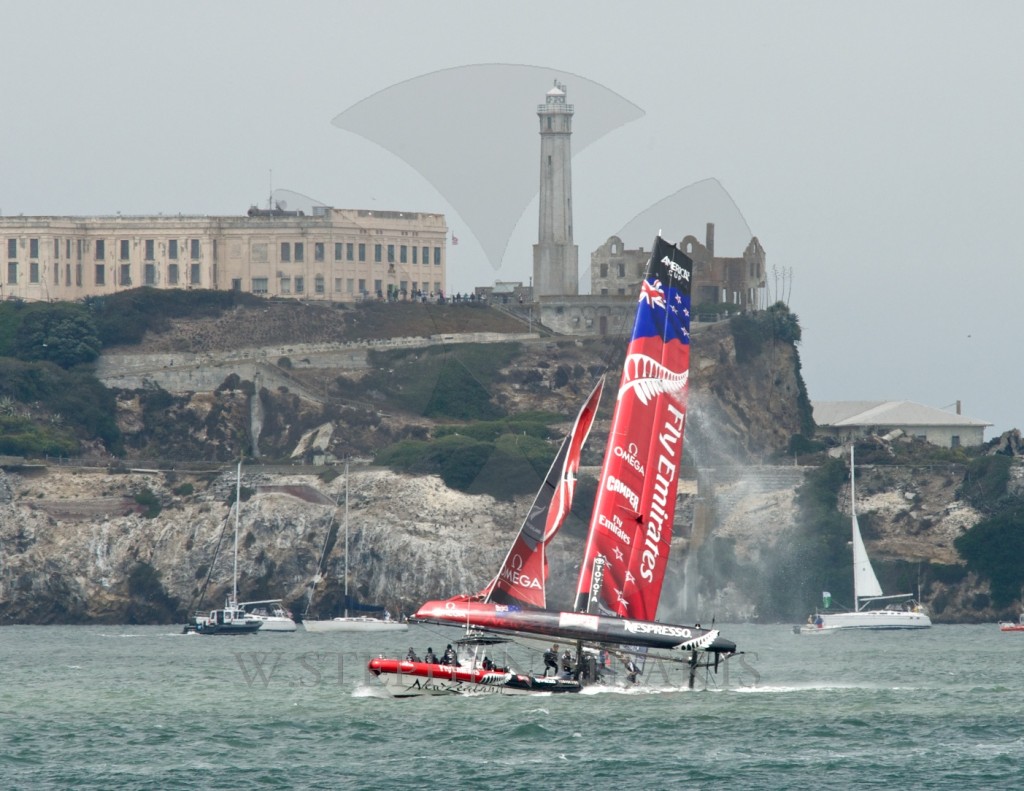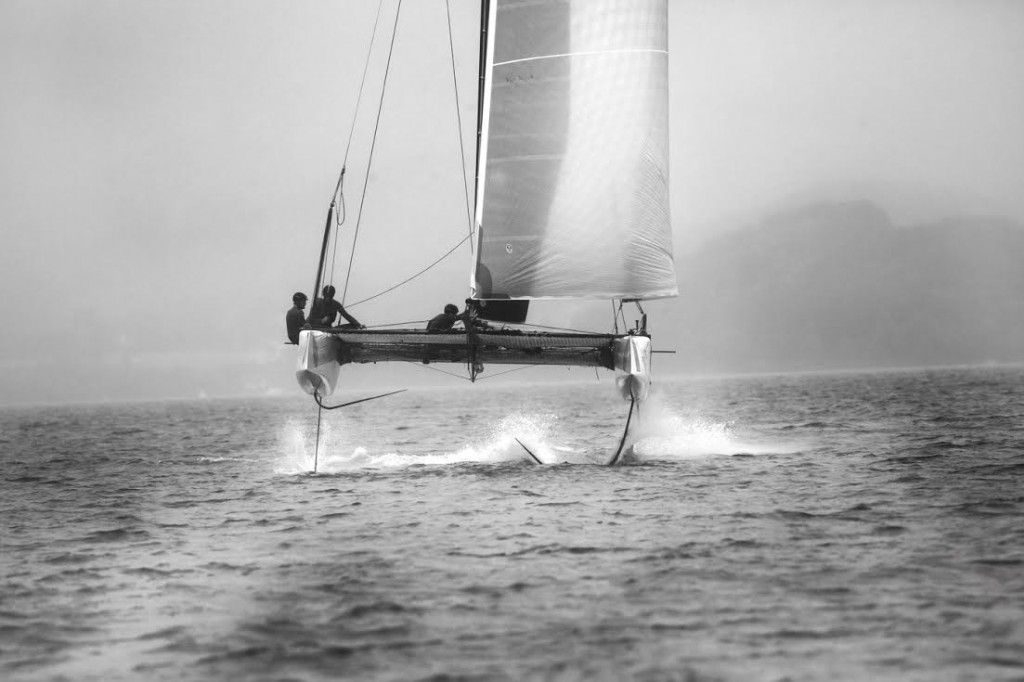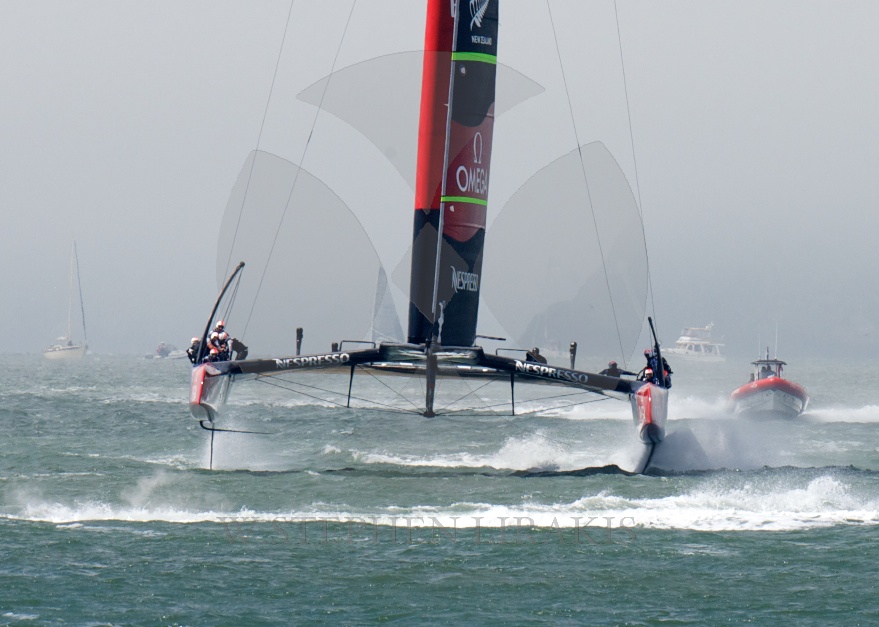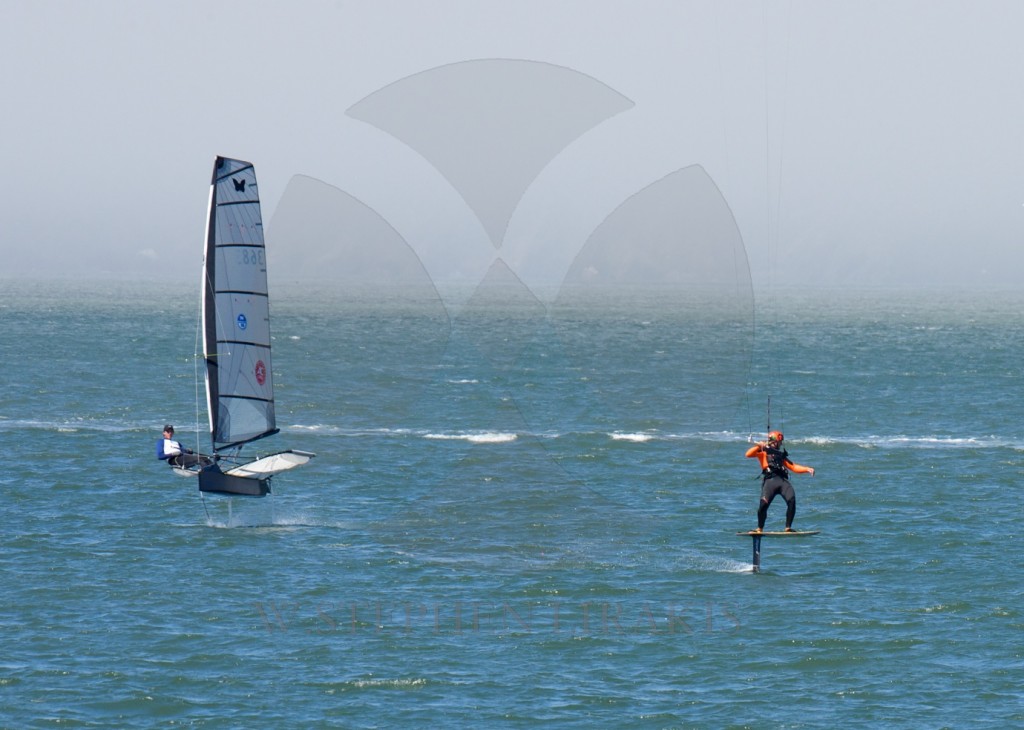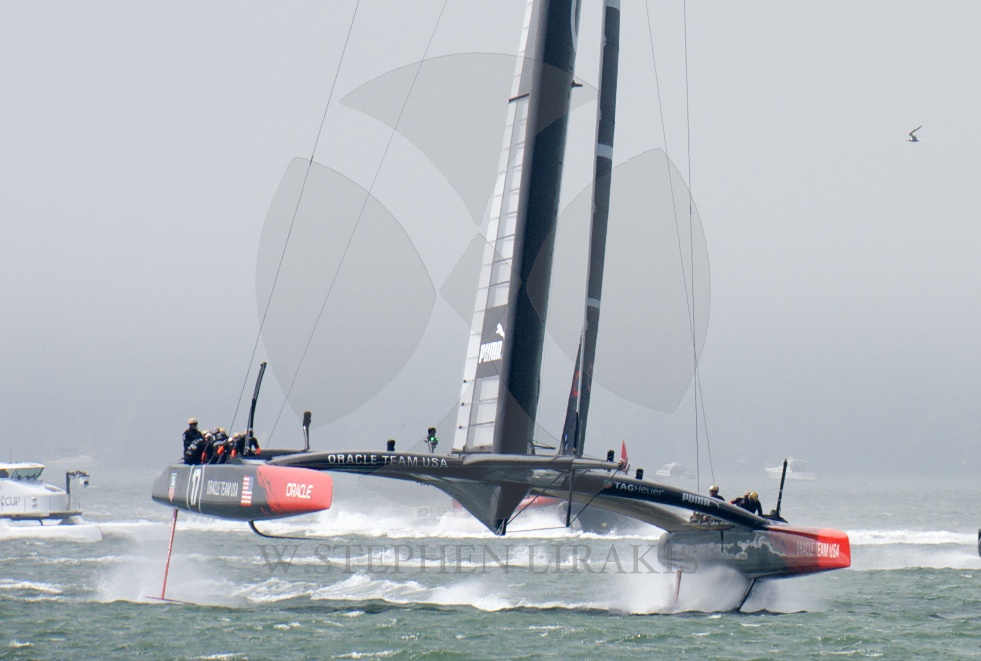Pete Melvin: Writing the new America’s Cup Rule
Pete Melvin, a partner in Morrelli & Melvin Design and Engineering, was involved in writing the AC72 rule used in the 2013 America’s Cup, and in writing the AC62 rule that was released June 2014 for the 2017 America’s Cup.
But with the increasing concern about rising team budgets, Melvin was called up again to help downscale the boat further for. After a week of work, Melvin and his design committee members put forth a plan that was approved on March 31.
Melvin shares with Scuttlebutt the process for the change…
There was a desire to reduce costs of the boats, and after Oracle and Artemis sailed their AC45 Turbos test boats on San Francisco Bay in February, they found them to be good boats which would provide good racing. They came to realize that a boat of that size could reduce budgets, which would help those teams in need of funding, without reducing performance.
The new Class has a length of 48-feet, which we got to as a result of a couple factors. The Deed of Gift requires a load waterline of not less than 44-feet, and we wanted to stretch the boat somewhat to aid its performance in light air.
While I have not seen the performance numbers that were generated during their testing in San Francisco, my understanding is they were in the 45-knot range, and that the time to complete the race course used during the 2013 America’s Cup wouldn’t be much different than what was achieved with the AC72.
What we found in our work when developing the AC62 rule was that their projected performance of that boat was not much different than the AC72 either. With these foiling boats, speed is not derived through waterline length in the same manner as a boat that displaces water.
Additional advantages with the 48-foot size is in logistics. They require less manpower both on and off the water. For transport, all the parts, including the hull, will fit inside a 40-foot container. Like the AC45, this boat will have a removable section so that you can break it down to fit.
Performance wise, we are continuing to analyze what it is capable of this 48-foot Class. The task of getting to where we are now is just a week old, but based on the observations from Oracle and Artemis from their 45s, they seem confident that it will be a nice boat for the event.
This new Class rule is fairly similar to the A62 rule. There have been a few tweaks but essentially the concepts are unchanged.
The hull will be a new design specific for this boat, but the rule tolerances will be tightly constrained similar to a one design class. Each team will build their own hulls, with the hulls built in their country of origin, but the hulls each team builds must fit within tight margins. These tightly constrained tolerances will also be applied to the cross structures and the wing.
The area of open design options will be the foils, the rudders and daggerboards. There will be some rule limits, such as foil location and length of extension, but determining shapes and designs will be open. Also, the control systems for the rudders and daggerboards is open. Each team will determine how best to control their foils. There are some limits in how the system operates, such as manual or power, but the rest will be unique to each team.
There is still a lot of work to do. The shapes for the hull, cross-structure, and wing have yet to be finalized. We are now working with the teams as quickly as possible to define the geometry for those items of the boat. The final documentation for those items is due by the end of May.





